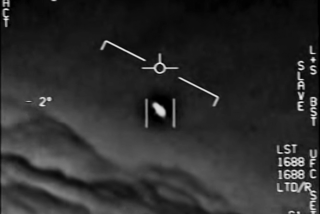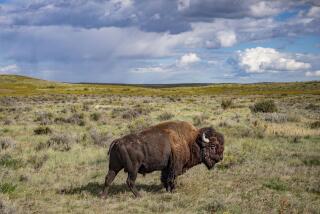JACKET COPY
- Share via
Bigfoot is a tall tale, up there with the Loch Ness monster and other such mystic creatures we can never seem to find. And yet we always choose to believe in him, just a little.
In “Bigfoot: The Life and Times of a Legend,” author Joshua Blu Buhs says right away that the beast is nothing but a myth. But he wanted to explain its complicated origins. He spoke recently with Jacket Copy.
--
Even though you say there is no Bigfoot, why did you choose to pursue this mythical creature in your writing?
Initially, it was the fact that I didn’t think Bigfoot existed, which was interesting to me. It was also about American ideas of what the natural world is. Sort of like: Here’s a screen on which people can project their ideas about nature. Though it turned out not to be as much about nature as I originally thought it would be.
--
Why are Americans obsessed with this legend? Where did the myth come from?
The myth of Bigfoot really started in the 1950s. It certainly hadn’t penetrated the modern American conscience until the ‘50s. The legend was popular with white, working-class men, where it sort of fit in, and eventually it worked its way into the mainstream.
--
How did the Bigfoot myth appeal to working-class men?
In the late 1960s and early 1970s, white, working-class men saw a stagnation in their opportunities and the amount of money they were making. Bigfoot then became a symbol of what they feared. And Bigfoot could also be what readers fantasized about -- escaping into the wilderness.
--
Even if people know for a plain fact that this monster doesn’t exist, why do we still choose to believe?
It’s complicated. Different people have different reasons. One of the ideas goes back to the idea of nature -- they want a world where there’s enough nature so that there’s still room for something like a Bigfoot to exist. Some of it is the romantic impulse of belief.
--
You describe some Americans thinking of Bigfoot as a representative of old-fashioned masculinity.
I think there’s this idea that civilization is opposed to masculinity. That once you have a civilization, people have to behave in certain ways. That society is a feminizing force. Then, you have this creature that lives completely -- and thrives -- outside of society. It speaks to this idea that men don’t have to bow to society -- the old-time, old cowboy, John Wayne stereotype.
-- Lori Kozlowski
More to Read
Sign up for The Wild
We’ll help you find the best places to hike, bike and run, as well as the perfect silent spots for meditation and yoga.
You may occasionally receive promotional content from the Los Angeles Times.






